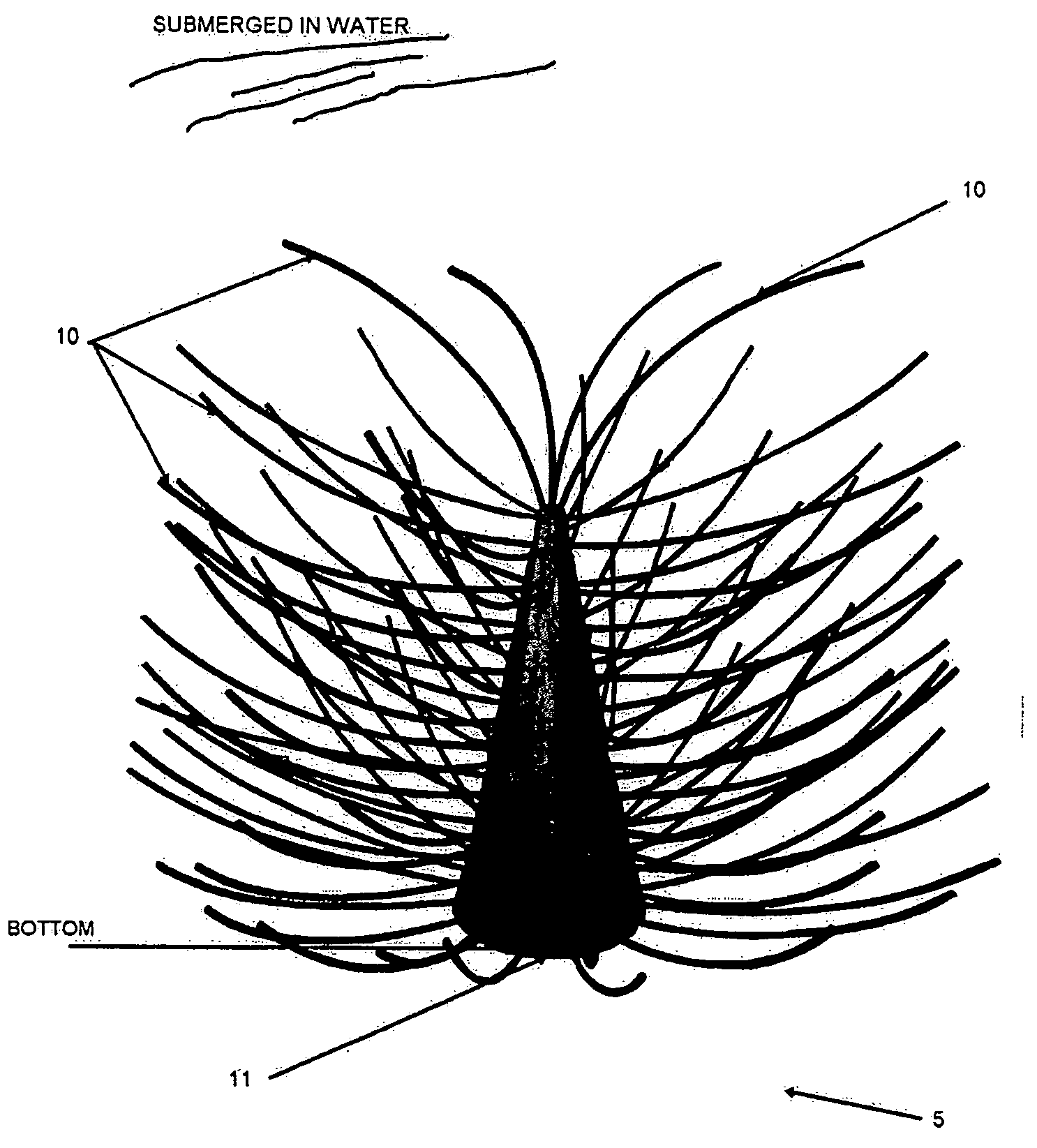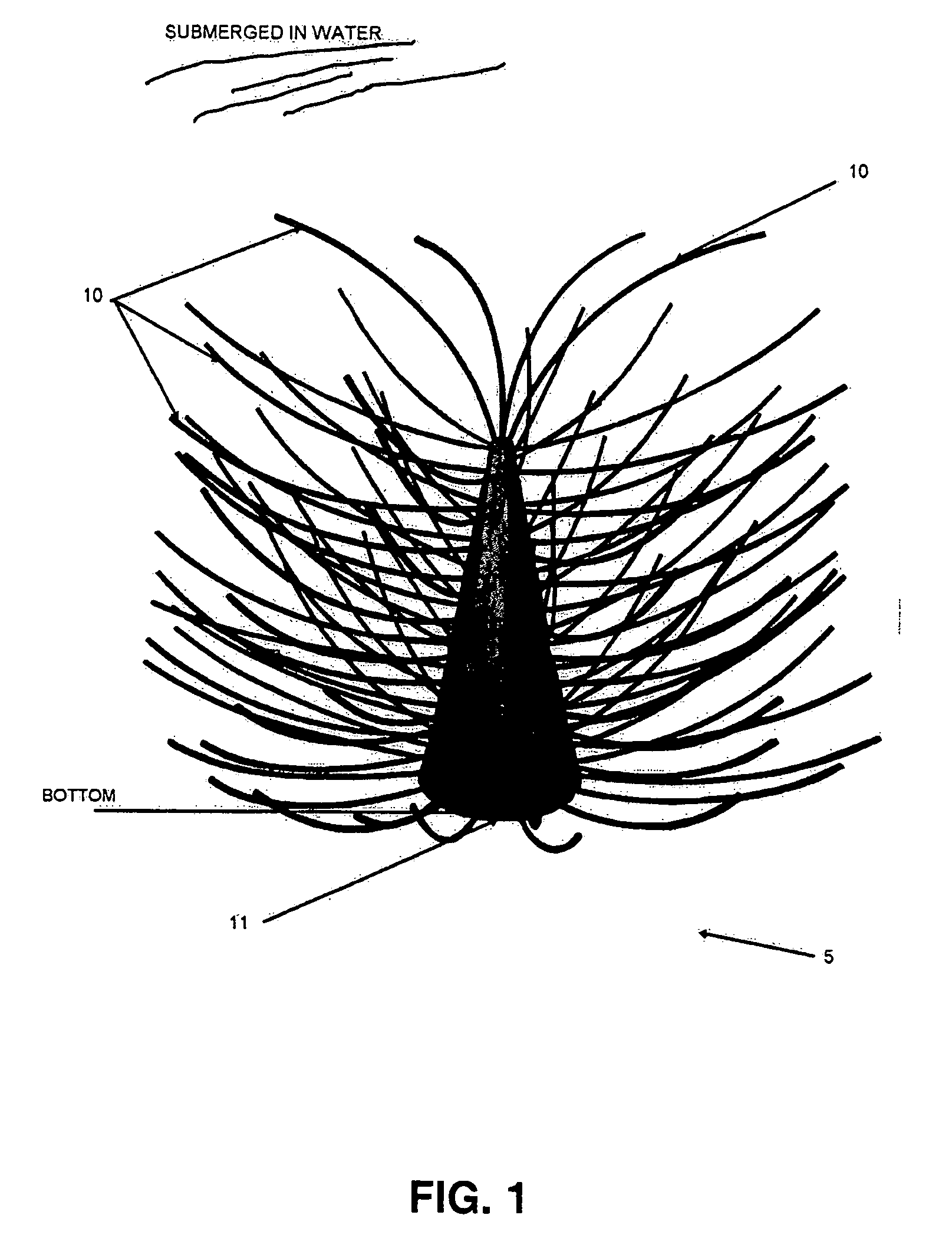Fish habitat
- Summary
- Abstract
- Description
- Claims
- Application Information
AI Technical Summary
Benefits of technology
Problems solved by technology
Method used
Image
Examples
Embodiment Construction
[0026]FIGS. 1 and 2 illustrate a cone shaped habitat element 5. In FIG. 2 the cone shaped body 11 is shown before installation of the strands 10. Strands 10 are constructed of one or a combination of materials such that at least some of the strands 10 are buoyant in water. Polyethylene is a preferred material due to its inherent floatability and water imperviousness. Other materials with densities greater than water can be used to form the strands by foaming with gas, mixing with less dense materials or other means. The strands 10 may be solid, hollow, round, oval, flat or slit films when the material chosen to form the strands provides the desired density needed for floatation. Preferably, flexible strands are used so that the strands can move with the water. The strands preferably have a deformable cross section for mounting. The length may vary from a few inches for shallow water applications to 30 feet or more if it is desired to create a habitat in deep bodies of water. The onl...
PUM
 Login to View More
Login to View More Abstract
Description
Claims
Application Information
 Login to View More
Login to View More - R&D
- Intellectual Property
- Life Sciences
- Materials
- Tech Scout
- Unparalleled Data Quality
- Higher Quality Content
- 60% Fewer Hallucinations
Browse by: Latest US Patents, China's latest patents, Technical Efficacy Thesaurus, Application Domain, Technology Topic, Popular Technical Reports.
© 2025 PatSnap. All rights reserved.Legal|Privacy policy|Modern Slavery Act Transparency Statement|Sitemap|About US| Contact US: help@patsnap.com



